Patrick Laviolette is the Professor of Social and Cultural Anthropology at the Department of Social and Cultural Anthropology, Tallinn University, and member of both the Local and the Scientific Committee for EASA 2014.
Welcome to Allegra, Patrick! Thanks for finding some time to answer our questions, even as the EASA conference in Tallinn is rapidly approaching. In this final instalment of our series of previews leading up to the conference, we would like to get to know more about the hosts of the conference – you, your department, and the Estonian anthropological community at large. To start off with a bang: who is the most important Estonian anthropologist, dead or alive?
Yes, a bang indeed, would be easy to shoot oneself in the foot when answering a questions like that. So at the risk of making the historical Estonian anthro-scene seem obsolete, and since in principle at least, I’m an ‘anti nationalist’, I’d say that your hunt for the most important Estonian anthropologist has parallels with searching for any origin myth. Perhaps fun but often futile. For my part, I don’t really have the time or competence to engage in that distinct type of archaeological digging. Besides, my take on obsolescence is that I do not really believe in it, or choose not to. So given the absurdity of suggesting that our Dept. would be obsolete before it has really had much of a shelf-life, then there’s not much point trying to name-drop in a setting to which I’m a relative newcomer. My answer to your question would therefore be, quite simply – our students. Especially those successful ones who’ve gained fully-fledged ‘soc-cult. anthropology degrees’ from TLÜ and gone on to promote the discipline in different careers, or by further study.
 In short, asking me this is rather awkward at the moment. I’d be as likely to say Marc Augé or Lévi-Strauss as anyone else, since theirs were amongst the first books which TLÜ Press have translated into Estonian. In this sense, I nevertheless find it necessary to pay homage to the Estonian intellectuals in EHI (Estonian Institute of Humanities) who set the wheels in motion for a series of translations of important anthropological monographs to occur in the first place. It was these people within EHI who should be acknowledged since they had an interest in anthropology for a long time before its official inception. They came up with the vision to establish what became the ‘first’ comprehensive anthropology programme in the Baltic.
In short, asking me this is rather awkward at the moment. I’d be as likely to say Marc Augé or Lévi-Strauss as anyone else, since theirs were amongst the first books which TLÜ Press have translated into Estonian. In this sense, I nevertheless find it necessary to pay homage to the Estonian intellectuals in EHI (Estonian Institute of Humanities) who set the wheels in motion for a series of translations of important anthropological monographs to occur in the first place. It was these people within EHI who should be acknowledged since they had an interest in anthropology for a long time before its official inception. They came up with the vision to establish what became the ‘first’ comprehensive anthropology programme in the Baltic.
So in that respect, I’d single out Triinu Mets, Marek Tamm and TLÜ’s inaugural Rector, Rein Raud. Triinu’s a doctoral candidate who now works for NomadIT, Marek and Rein are Estonian public figures who, for quite different professional reasons, seem to have a soft spot for the field of anthropology.
On the department’s rather informative homepage, I read that it was founded in 2006. Was there no anthropology in Estonia before that time, or was it ‘hidden’ within other institutions? What about the Soviet times? This also concerns the relations of anthropology towards other disciplines at your university, both past and present.
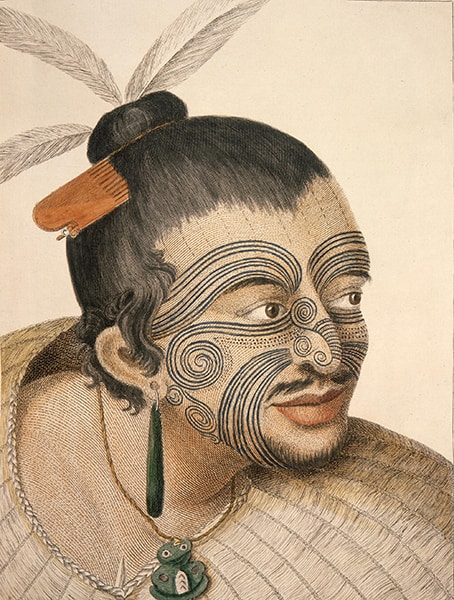 Obviously it was here but as you say, it was hiding, camouflaged by different labels. Now light’s being shed back on it, by things such as the recent SIEF conference last year in Tartu and this year’s EASA of course. Until quite recently, the Art Academy in Tallinn (EKA) also had an anthropology programme with a much more art historical focus. Unfortunately, the demographic and funding climate here is such that they were forced out of existence.
Obviously it was here but as you say, it was hiding, camouflaged by different labels. Now light’s being shed back on it, by things such as the recent SIEF conference last year in Tartu and this year’s EASA of course. Until quite recently, the Art Academy in Tallinn (EKA) also had an anthropology programme with a much more art historical focus. Unfortunately, the demographic and funding climate here is such that they were forced out of existence.
Viljandi’s Culture Academy has various programmes in different fields of art and craft, focusing on the importance of different cultures, both inside and outside Estonia. They’ve been active for quite some time. For example, the Rector of that institution Anzori Barkalaja, was the undergraduate supervisor of one of our lecturers Marje Ermel. She tells me that at the time of his appointment, that academy was in considerable turmoil and that he helped stabilise it and restore its reputation.
Yet in reflecting back on the scene during Soviet times, well, this really isn’t for me to comment upon. During the conference someone from the Allegra team should speak with Art Leete. Or better still, listen to his brief address during the welcome ceremony of the conference. Indeed, Tartu University has had a strong legacy of in the fields of archaeology, ethnology, folklore, heritage studies and semiotics.
Crassly perhaps, this is a part of Europe where, until quite recently, anthropology as such has been largely absent in terms of accredited teaching/research. So the conference and the growth of interest in the subject will serve – not only to acquaint the discipline with this region and vice versa – but also to foster exchanges between anthropology and more regionally established cognate disciplines.
What about the anthropology of Estonia? Is there an established corpus of literature and topics? Is there a lot of research being done in and on Estonia, or are there other particularly preferred research areas in your department? Do MA students have support to carry out fieldwork, and what sort of projects do they embark on?

We have many local as well as ‘foreign’ students/researchers who are showing a vibrant interest in promoting a sustainable future for anthropology in the region. In this capacity, you should really interview the people in our department (or with close affiliations) who’ve worked on such issues for quite a while. I’m thinking particularly of Aet Annist, Marje Ermel, Maarja Kaaristo, Eava Kesküla, Joonas Plaan, Polina Tšerkassova and so on. In fact, our first MA graduate Carlos Moreno Romero (who studied English Philology in Colombia before moving here) did a project on narratives of integration at an Estonian school.
So briefly, yes, we’re trying to embrace all that anthropology at home stuff. And yet, how do I say this diplomatically (because this has been a source of contention for us, at least in the past) but anyway here it is: we do have to maintain a certain academic niche. In a small research community such as this one, there’s a need to produce and disseminate material which doesn’t overlap too much what everyone nearby is doing.
In that capacity, the significant presence of Asian Studies in our Institute historically (perhaps pushed by Rein’s speciality as a Japanologist) has meant that we have lots of vitality from anthropology researchers within EHI who are technically affiliated with other departments. Laur Kiik, who’s working on various political ecology topics in Burma, is one of several examples of this.
Anyhow, as in any anthropology department I suppose, the projects are as extensive as the imagination of the students. Recently we’ve had fieldwork based dissertations on local theatre and yoga groups as well as on experiences of trans-nationalism in Azerbaijan. Or even on Karakat hybrid vehicles which are used for fishing on lake Peipus. Another student in the same border region between Estonia and Russia chose to study how Old Believers appropriate certain forms of technology. Another thesis was on perceptions of disgust amongst an alternative community of dumpsters-diving squatters in Barcelona. One dissertation examined Estonian election campaigns; another the fishing and conservation sectors of island communities.
There are some sources of fieldwork support through various schemes locally and abroad. We’ve had students who have been successful obtaining grants or scholarships from Fulbright, Kristjan Jaak Stipendium, DoRa and our own EHI research fund. In addition to our own website, a good resource for those who are interested in finding out more can be found here.
Many of our graduates have gone to pursue further education as far afield as Canberra, Edinburgh, Newfoundland and NYC (Columbia & The New School). Others work as teachers. Others still as as tour guides and volunteers in Uganda or the Amazon.
Your homepage says the department has been steadily growing. Is there a specific reason for this?
Well, as I’ve just indicated, we’ve had lots of interesting people pass through over the years of our short history. So the word must have spread that we’ve got an active, vibrant team of young anthropologists doing some cutting edge stuff. That’s the management speak.
Some of the other reasons obviously have to do with the novelty and situated-ness of Tallinn itself – a new university within a capital city that is both embracing some facets of westernisation whilst also trying to leap-frog the downsides or weaknesses of hyper-capitalism. There’s a resistance ethos here which is far from useless. A wish to maintain or properly implement some of the core values and principles that were blighted by the staunch socialistic/co-operative/communistic regimes of this region’s troubled history.
Do you think hosting the 2014 EASA conference will have a long-term impact on the department’s work?
I should hope so. Otherwise I’m not entirely sure why we would have invested so much time into its planning and into attempting innovative formats such as the labs. It’s allowed us to realise and work to our strengths. To develop some coherence to the courses we teach and subjects we want to investigate. EASA itself is a fantastic organisation that we’re all excited about and wish to support.
There were many reasons for wanting to host this conference at this particular time in our history. One of the main one, however, was to seize on the excitement for the subject in this part of the world – especially when anthropology programmes in many other settings face the threats of downsizing, or the management fatigue that goes with excessive accountability and audit culture.
Do you do a lot of outreach/public activities? I am asking this in part because of the laboratories planned for the upcoming conference, which seek to cross the boundaries into the public sphere of Tallinn – is this indicative of a more general approach of your department? Is the Estonian public aware of and interested in anthropology?
Yes and yes. And as far as the public’s awareness is concerned, I’m sure you’ll appreciate that I don’t get out as much as I should do these days. So I’d expect it’s growing rapidly from what we’re witnessing when in comes to interviewing recruits as well as when dealing with the media and other ‘virtual’ communities such as yourselves.
For instance, one effort in this regard is to have a series of summer lectures by our staff and affiliates to finishing high-school students. At our recent interviews, this was mentioned a couple of times as what had inspired the decision to apply to our BA programme. We also have an active student NGO Eesti Antropoloogia Ühendus. Amongst its many roles, it occasionally provides consultancy expertise in the areas of arts and film as well as other applied anthropology projects such as environmental conservation initiatives. Moreover, our post-grads have set up numerous interdisciplinary events: photography and exhibition curations, summer and winter schools which have even ended up getting published.
The staff at your department is visibly cosmopolitan. But what about your student body? Is it exclusively Estonia, or are there already people applying from abroad as well? And, possibly interesting for some of our readers, do you already have ERASMUS exchange programs established?
Well yes, I’m told we’re the most international department within TLÜ, both in terms of staff and the student body. The undergraduates are mostly from Estonia but we’ve increasingly had interest from elsewhere. We were doing interviews earlier this week. It was surprising to see that a few candidates who’ve been living abroad have decided to apply.
As far as postgraduates are concerned, that’s much more international. From what I’ve seen, it started by grooming some of the local talent from the BA programme. More recently, however, we’ve had post-grads join us from Italy, Latvia, Spain and the US. For example, several MA candidates for the new semester will be from: Cameroon, Finland, Germany, Iran, Ireland and the Netherlands.
Regarding Erasmus, yes indeed, we’ve got approximately 14 or 15 such exchange agreements. Not surprisingly, so far the students we’ve had over here have been from Baltic institutions (from the Univ. of Latvia and Riga Stradins Univ. in particular, with a couple from Lithuania but who weren’t just visiting to study anthropology). The most popular destinations that we’ve sent people to have been Aberdeen, Coimbra, Copenhagen and Durham. They’ve come back with a passion for their subjects and some fantastic exposure to anthropological topics.
There’s a programme in Estonia called DoRa which has also allowed us to attract visiting work placement students as well as doc/post-doc lecturers. Recently, Jeanette Edwards set up a Ph.D. exchange scheme between Manchester Univ and the Baltic Graduate School which also consists of the Univ. of Latvia and the Lithuanian Institute of Ethnology and History in Vilnius. The first student, Theo Kyriakides, is here with us already, helping with EASA logistics.
Finally, I would like to ask about your personal trajectory – how did you come to Tallinn? What is it like in more general terms to work within the Estonian system? What are some particular challenges or opportunities for you, doing your job?
 Literally? I travelled here by plane from New Zealand. Dropped a kitten and some bags off in a flat that was prearranged by the university and, less than two days later, boarded a flight for Dublin to attend the Maynooth conference in 2010. After returning from that, I remember going to the head uut astat (happy new year) ceremonies to celebrate the University’s 5th anniversary. The event was great. It encompassed one thing which I realised would haunt me for my time here, however – much of the bureaucracy and many of the events are in Eesti Keeles.
Literally? I travelled here by plane from New Zealand. Dropped a kitten and some bags off in a flat that was prearranged by the university and, less than two days later, boarded a flight for Dublin to attend the Maynooth conference in 2010. After returning from that, I remember going to the head uut astat (happy new year) ceremonies to celebrate the University’s 5th anniversary. The event was great. It encompassed one thing which I realised would haunt me for my time here, however – much of the bureaucracy and many of the events are in Eesti Keeles.
Understandably so, the new professor of cultural theory, Tiina Kirss (who is completely bilingual) gave a welcome address to the freshers in Estonian. So what I took away at the time was that not understanding the language would give me a certain freedom to concentrate on my own work. But the flip-side is a form of self-imposed alienation. And this isn’t just at a personal level.
Administratively, you can surely understand the frustrations when dealing with a place which is embracing globalisation and yet (because of the demographics), having to make real efforts to preserve its language as a living and working form of communication. Admittedly though, this does sometimes get us out of some of the more boring admin-tasks which most academics rarely enjoy.
Anyhow, after that welcome to the first autumn teaching semester, I was thrown into the deep-end with a full load of courses (and this when the first snowfall occurred in September or October). Still, I was able to develop some new courses and find out about some fantastic projects.
When I moved to New Zealand from London, it was to work in somewhat solitary confines as an anthropologist in an art college. The great thing was, I was then able to push my teaching and research towards more in-depth visual and material culture issues. Most of my colleagues were artists and I learned a lot from them. Yet at the time, I completely undervalued what I was getting out of the opportunity because the idea behind moving there was to make sure it wasn’t permanent. So all in all, it was a rather unhealthy state of mind to be in for too long a period.
The trajectory back to Europe had been put in motion by meeting Triinu Mets at Macquarie’s AAS conference in Dec. 2009. Against my better judgement at the time (because I was on sabbatical trying to finish a monograph) she nonetheless managed to tempt me into applying for a short-term ‘maternity’ replacement position to fill-in for Aet. Thinking back now, it was madness really to even contemplate giving up a full time position for something like that. But when I looked up the profiles of the people that were here, I realised I wanted to come back home to anthropology.
It was strange because in 2005 I had met Carlo Cubero at the RAI’s 9th ethno-film festival in Oxford. Then I saw that there was someone else in Tallinn who I’d met in Bristol the following year when we were being interviewed for the same job. This was Jonathan Miles-Watson (a post-doc researcher here from 2008-2011). So on those grounds alone I was impressed by how much seemed to be happening in Tallinn.
Additionally, the University website had a series of rotating images which at that time depicted these fantastic symposium shots of Lorenzo Cañás Bottos and Maurice Bloch. There was also one with Marek Tamm and Umberto Eco. In probing the site further I discovered that Giddens, Ingold and Spivak had all spent time in Tallinn on summer schools or via interviews on the Virtual University portal. So these were pretty much the most important pull factors.
What do you think everybody should know about social and cultural anthropology at TLU?
Well, can’t remember if this came through in the interview you did recently with Carlo but even so, it’s worth repeating… we’re launching a new specialisation track in our MA programme this year. It has a great acronym: AVE (audio-vidual ethnography). It’s an initiative in collaboration with the Baltic Film & Media School whereby graduate researchers will submit non-textual works as a complementary part of their dissertations.
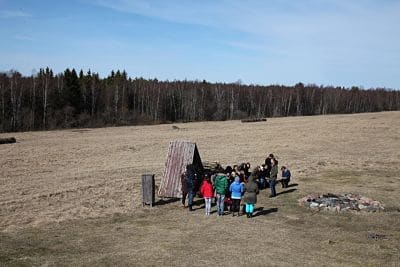
Additionally, in terms of the student body, as I’ve mentioned, they’ve set up their own NGO a few years ago. They run their own anthropological retreats in both winter and summer, choosing all sorts of fantastic locations in the countryside. They also invite guests to run workshops as well as present various works-in-progress to each other. They’ve equally compiled a documentary film library which allows them to screen films in high-schools with discussion sessions afterwards. They’ve thus succeeded is promoting an understanding of anthropology to a generation of people which is more difficult for us to access in the realm of higher education.
We’ve also got a seminar series which Franz Krause set up a couple of years ago when he arrived as an ESF post-doc researcher. He ‘branded’ it Inimkond – Current Issues in Anthropology and Beyond (inimkond refers to humanity in Estonian).
So if people are planning on travelling through Tallinn at any point during term time, let us know and we’ll try to fit you into the schedule. We even have a little budget to cover an evening or two’s accommodation so that there’s a chance to see the city a wee bit.
Thank you again for your time!
Pleasure. Thanks for the interest and we look forward to meeting some of the members of the Allegra team in less than a fortnight now.
Feature image by Xavier Ballester (Berlin 2014)
Felix Girke is, among other merits, Allegra’s Master of Ceremonies for EASA 2014 and related coverage.
Enterprise Estonia is Allegra’s official sponsor for the event. 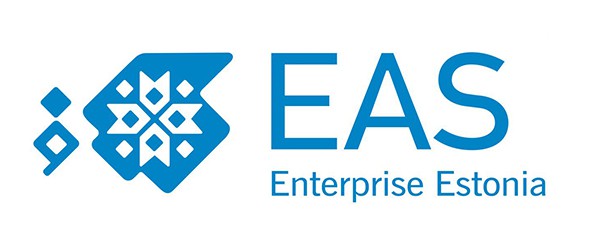

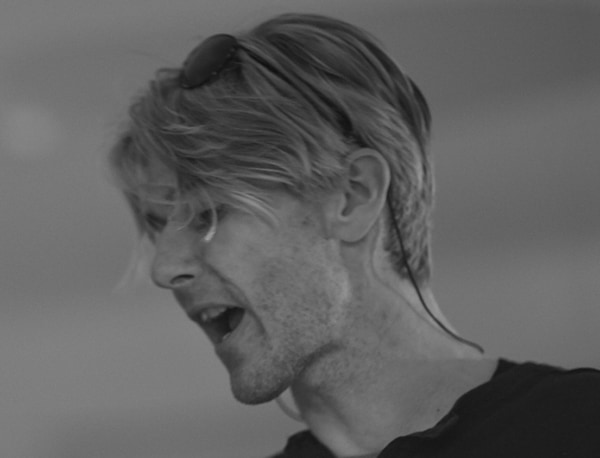
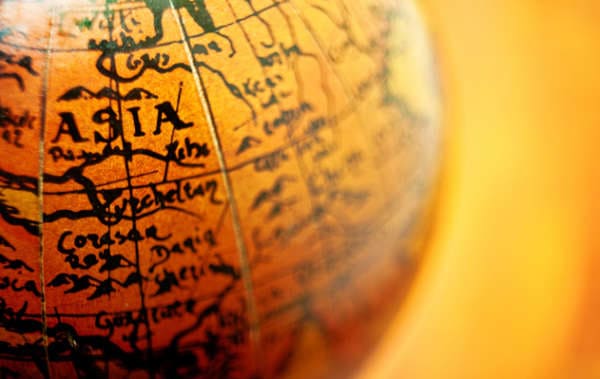


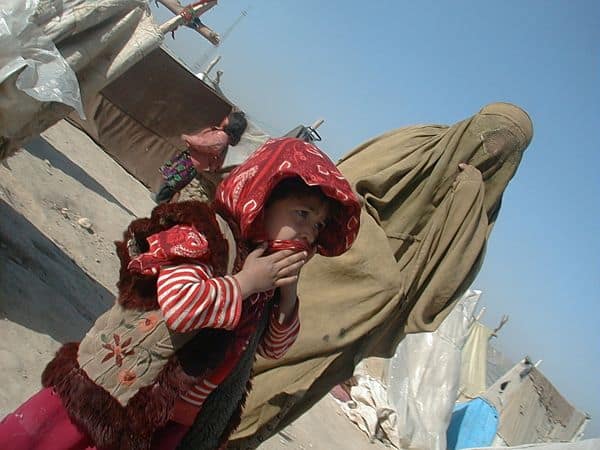
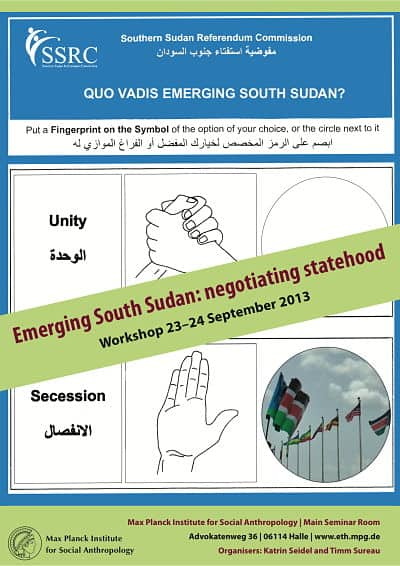
A good-read about how Anthropology has originated and spread in the Baltics.